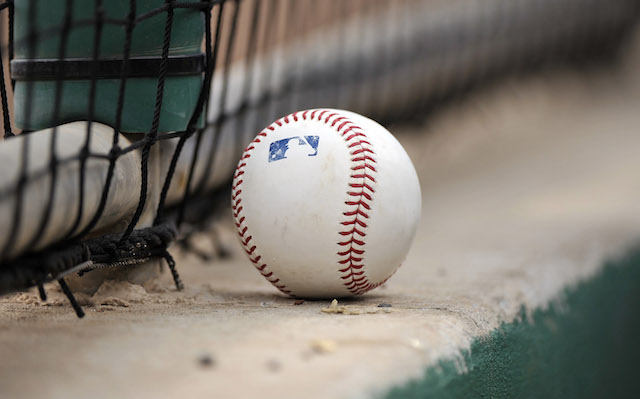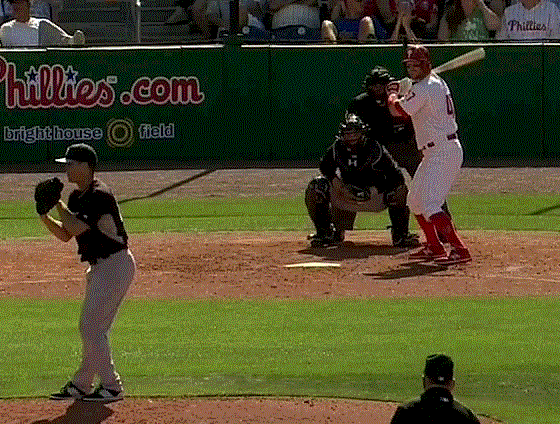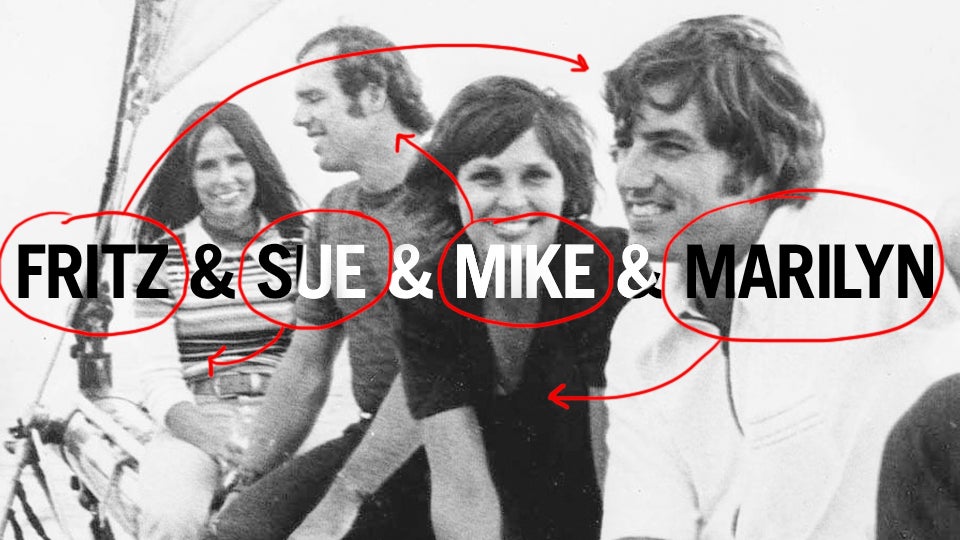We're back with the second part of our introduction to a new sport called BetaBall. Hopefully you guys enjoyed the first part of this series and will enjoy this one as well, and if you don't please let me know and I will scrap the idea. Without further delay here is part two of the BetaBall introduction as we wait for the Yankees to take the field in Bradenton before facing off with the Pittsburgh Pirates.
Key rule in Phase One BetaBall:
Start today on any hardball or
softball field in the world.
·
When the bases are empty and a batter is OUT by
strike-out, ground out, fly out, line drive, caught foul ball; or pick-off at
any base, the fielding team has the opportunity to score a Defensive Point. The
play is extended after the OUT is declared requiring the out batter or
picked-off runner to immediately proceed to run all the bases (or remaining
bases in case of a force out or double play ball or pick-off) and touch home
plate BEFORE all the players on the field have handled the ball and returned it
to the catcher at home plate. In that frantic 8 -16 seconds, the batter can
AVOID a defensive point by reaching home plat before all the field players have
handled the ball. But if all the field
players do handle the ball and get it home before the batter or runner; then
the defensive field team is awarded a Defensive Point. Defensive points accumulate
and convert into runs.
·
A throwing arc painted on the outfield surface defines
the zone the outfielders must occupy when their team is attempting to win a
defensive point. They must catch and throw from beyond the arc.
·
For long fly outs or foul outs beyond the
throwing arc, only the outfielders (and perhaps 1 cut-off infielder) need to
touch the ball before throwing it to home plate.
·
Defensive points SCORED by the field team
accumulate and convert into runs at agreed benchmarks set by the League ….
Perhaps 5, 6, or 7 defensive points will convert to 1 run. A league office will
determine this threshold.
Defensive point situations:
1. Strike
out or foul tip caught. Batter
immediately starts a 14-18 second circuit around the bases. All defensive field
players must handle the ball and throw to home before the batter gets
there to be awarded a defensive point.
If the batter gets home before all players handle the ball, then his
team avoids a defensive point.
2. Pop up,
line drive, or ground ball to the infield All 9 fielding players must handle the ball.
3. Foul ball
out within the OTA arc. All 9 players must handle the ball
4. Long fly
out or foul out to the outfield beyond the OAT arc. Only the
3 outfielders and catcher must handle the ball to be awarded a defensive
point. Sometimes a cut off infielder may
be used to get the ball to home plate if the outfielders are near the outfield
wall.
5. A force-out
or double play ball and both runners are out with no other runners ahead
of the out-base runners; then all 9 players must handle the ball to get a
defensive point.
6. Fair ball
hit as a double play ball and only the lead runner is out
(normally at second base) with no other runners ahead of them. All 9 players
must handle the ball.
7. A
pick-off at any base when there are no other runners ahead of the
pick-off victim.
For example, in a hit-less inning without a base on balls, at least 3
defensive points are possible. Once there is a runner on any base, no defensive
points are possible until the next inning.
Only when there is a home run will defensive points again become
possible in that inning.
The
option is a dual award system where total defensive points count for 1 point in
league standings; and total runs count for another point.
Start today on any hardball or
softball field in the world. Get a dozen small plastic garden markers and plant
them each 200 feet from home plate (OTA) A temporary throwing arc.
Scoring:
Coaches, you have at least 2 scoring options when introducing BetaBall
to your league.
1.
Assign two points for every game in the league standings. Award 1 point
to the team scoring the most pure runs on offence; and another point for the
team who achieves the most defensive points (DP)
2.
Test a league rule that converts each
5 defensive point (DP) into a run and the team with the combined score
wins all 2 points.
Rule Options for Converting to
Full BetaBall:
Summary
Full BetaBall is a team sport with 9 players, 9 innings,
similar playing field, similar skill sets, and same equipment as traditional
baseball. The game is still a
demonstration of 5 basic skills …….
running, fielding, hitting, catching, and throwing. But for BetaBall, we use:
Enlarged strike zone. 18.5 inches wide and + 34 inches
long. Expanded.
3 balls to walk;
Electronic pitch calling with overhead and side electronic
cameras.
Touch not tag at home plate.
Batters must stay in the batter’s box;
Designated hitters;
Intentional walk on request; No 4 pitches.
Time clock between pitches; About 20 seconds
2 warm up pitches for relievers from the bull pen;
Limited visits to the mound;
Plate umpires are 50% ceremonial and 100% theatre.
A running swath 3.5 meters wide protects runners as
they dash the bases.
90mph is the maximum pitching speed. Fewer blown arms.
Runner Swath: In
DPP situations, the batter / runner cannot deviate from a 3.5 meter (12 ft. ) wide
invisible “swath” while rounding the
bases. Fielders must avoid this swath because if the batter /runner can touch
either the ball or a fielder within the swath, the DP opportunity is
automatically avoided.
Outfield
Throwing Arc: In BetaBall , a throwing arc (OTA) is painted
on the surface of the outfield and all outfielders must remain beyond the arc during
a DPP to catch a ball from the “infield horn” or to throw the final DP ball to
the catcher. All points on the arc are equidistant from home plate and this distance
may vary according to the age or skill level of the players; little league to
college to professional to senior leagues ….. hardball and softball.
Home Plate: The
home plate dimensions change to avoid collisions on DPP situations. The catcher need not tag the runner. Home
plate has a hinged front edge or be layered and the top layer attached to the
bottom layer by tongue and groove. The umpire manually extends the plate when a
DPP is under way. The catcher “owns” the front part of the plate; while runner
“owns” the rear part to touch the plate. No tag necessary.
To repeat, in DPP situations in which the bases are empty and the batter
is “out” by strike-out, line drive, fly ball out, ground out, foul tip, foul
ball caught, or a base runner is picked-off; then the batter or runner must
immediately run and tag the remaining bases and touch home plate before each
defensive player has handled and touched the ball. This will avoid a DP.
In DPP routines, the first baseman usually handles the ball first and the
catcher last. Most balls will go “around the horn” and then be thrown to the
outfield culminating in a long throw to the catcher. The outfield throw to home
plate is the most exciting play in BetaBall as well as in baseball. BetaBall
will showcase at least 40 of these throws per game.
In BetaBall is the Defensive Point Play (DPP) comes
into effect when a new batter comes to the plate and there are no base
runners.
Sample DPP situations in a typical 9 inning game are
as follows:
1. The
lead-off batter in each inning:
Team A 9 batters Team B 9 batters
2. The
second batter in each inning. (Assume a team batting average of .333)
Team A 6 batters Team B 6 batters
3. The third
batter in each inning. (Assume a team
batting average of .333)
Team A 4 batters Team
B 4 batters
4. The next batter
following a home run which clears the bases. (Predict 3 home runs per game on average)
5. Special
cases. a) Double play ball when there is a runner on first base; b) pick-off
at any base and no runners ahead of the pick-off victim; In a successful
double play when both the lead runner and batter are out; then both must run
the bases and touch home plate before the defensive team can touch and handle
the ball to both avoid a DP. In
extremely rare situations the defensive team can score 2 DP’s on the same play.
Safety
features of BetaBall:
3. Maximum
pitch speed at the professional level will be either 90 or 95 MPH. Slower speeds for minor and college leagues.
Fewer blown arms.
4. Runners
Swath. An imaginary lane 3.5 meters wide
protects the runner. If a runner can touch the ball or any infielder during a
DPP, he is automatically awarded home plate and the DP is voided.
5. Each
On-Deck box is located much farther away from the batter’s box. Both boxes are
shaded and host an exercise bicycle. Better leg muscle preparation for a DPP.
6. A larger
and extendable home plate for the runner and catcher to share. No tag at the
plate is necessary in BetaBall.








